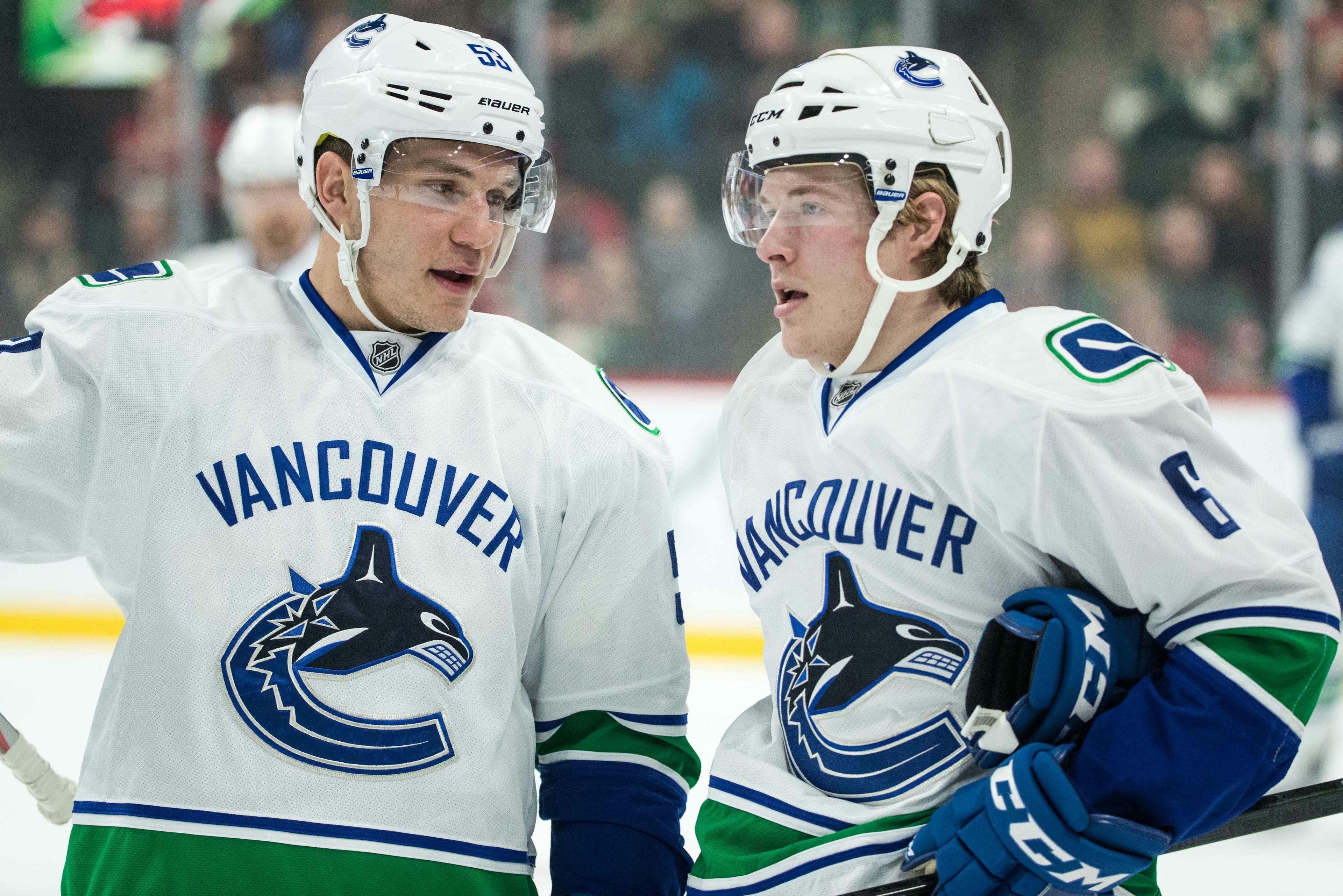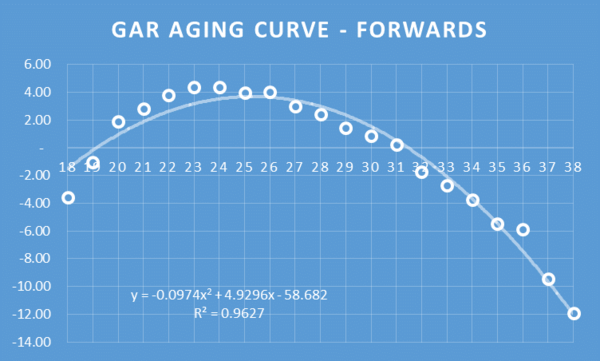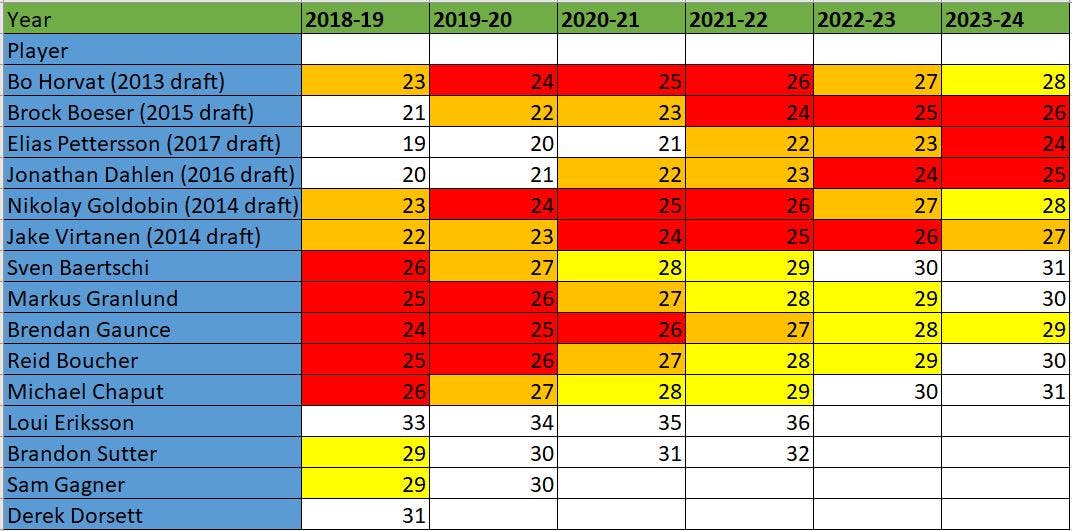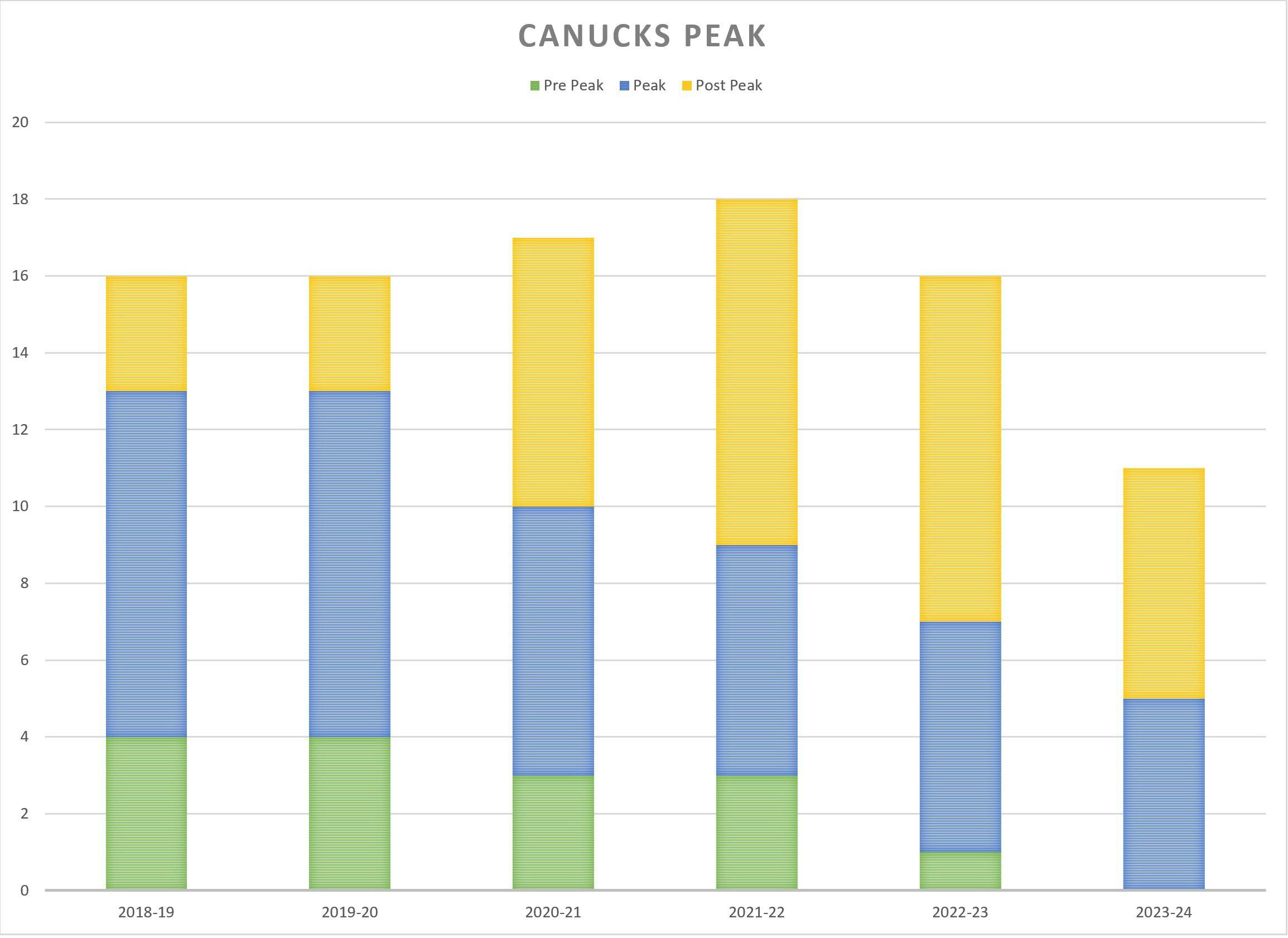When will the Canucks peak?

6 years ago
As the Canucks continue to build up their prospect pool and keep an eye on the future, that raises an essential question: When will the Canucks be ‘good’ again?
The Canucks are in a rebuild and will likely see improvement over the next couple of seasons as they accumulate more young players. That’s led me to explore the path of ageing curves and see where the Canucks players fit.
Former CanucksArmy writer and current Florida Panthers employee, Money Puck, talked about building a contender and the first two posts (first can be found here, and second post here) were dedicated to WAR (wins above replacement) and ageing curves. Naturally, his data is now two years old, but here are the GAR ageing curves for forwards:

And defencemen:

His conclusion based on that data was the forwards are in their prime between the ages of 22 and 26, while defencemen have a similar prime but a more definitive peak of 24-years-old.
As mentioned then, there will be exceptions to these, but the overwhelming majority will follow a similar trajectory. There will be players who buck the trend, and there will be players who fall off a cliff.
Hockey-Graphs writer EvolvingWild reinforced a lot of these ideas of peak and prime years this spring, as represented by these ageing curves.

It’s a different methodology, but as we can see, the peak/prime is around the same time frames. A steady climb to the peak at 24, then slight dip, then a decline as players start to become UFA eligible.
Lastly, DTM about Heart from Hockey Graphs provided some updated GAR data this summer. Petbugs from Canucks Army then graphed that data to show the peak aligns with the previous two sources:
With three previous pieces of research showing similar ageing curves, we can turn our attention to the Canucks; we can see where the primes lineup based on those aforementioned ageing curves. But first, some disclaimers:
- Included are players who are already signed or are RFA for the 2018-19 season.
- The ages used are what the players are for the majority of the season. There will be some variance due to when their birthday is, but the age used is what they are for the most days of the expected season.
- I’ve only listed top prospects for each draft year – so for example when looking at Elias Pettersson and the 2017 draft class, you can add players like Kole Lind and Jonah Gadjovich as they are the same age and should follow the same curve.
What became clear is that the Canucks will again ‘peak’ again during the 2021-22 season. They should see some rewards for their efforts during the 2020-21 season, but the following year will be when the tables turn. That peak should ride for one or two more years following 21-22, and without more additions will slowly trend downwards from there.
Forwards

In the forward ranks, it’s clear that the Canucks best players will peak between the 2020-21 to 2022-23 seasons. Elias Pettersson, Jonathan Dahlen, and Brock Boeser will peak for another two-to-three years, but that is when the existing supporting staff has begun their fall off. Not every player will follow that similar drop-off, but some will and that secondary support won’t be able to help their best players.
Obviously, the Canucks prospects like Adam Gaudette, Kole Lind, and Jonah Gadjovich will hopefully fit into that supporting cast. It would just mean that every player they drafted would be making a tangible impact at the NHL level at the expected development time.
Defence
On the backend, we see the similar peak years
I’ve extended the ‘peak’ windows to replicate the forward group but just a reminder that defencemen will peak at 24-years-old and begin the decline. 

I’ve only included the top of the heap defence prospects here, but even they come with question marks about making the NHL and what their overall ceiling is. What sticks out is that the only player that is currently playing on the NHL roster that will be here and in their peak is Troy Stecher. The remaining players are either starting their decline, like Ben Hutton and Derrick Pouliot, or are well past it.
Putting it together
When combing the forward and defensive groups, you get this outlook:

The front is a bit more ‘peak’ heavy due to players like Granlund, Baertschi, Gudbranson and Sutter being in their prime years. Which means, what you see from them now is what you are getting. 2021-22 is the year where Bo Horvat, Boeser, Pettersson, Gaudette, Dahlen, Jake Virtanen, Kole Lind, Jonah Gadjovich, and Olli Juolevi are in their prime or close to the start of it.
Some of these players will buck the trend by extending their peak, entering it early, or falling off quickly. But you can’t be worrying about those black swans that will come out of nowhere and help.
Conclusion
Although that time-frame is reasonably clear, the question then is: is it enough?
If the Canucks win the lottery this year and can add a Rasmus Dahlin or Andrei Svechnikov, they can perhaps provide an impact earlier and for longer than the standard curve. That will help to ensure that the peak doesn’t happen and then pass without the ultimate prize.
Some of the current long-term contracts will be past their prime and would have to be replaced. These things are fluid, and as we all know things change quickly. A player becomes available, or another player plays well past the ‘prime’ and is an outlier.
We’ll spend some time looking at the makeup of the Canucks’ prospect pool over the next couple of weeks to see where there might be more gaps. But at first glance, they have some good building blocks and then quite a few questions marks — then again, every team has that. So it’s about working to align with that peak of the current players in the organization and maximizing that window as best you can.
Given all this information, the Canucks have a decent group of forwards that should have their top prospects peak closely together. There are a handful of secondary prospects within the same timeline, but it’s relying on them meeting their ceilings to provide support. The current Canucks supporting cast will be past their primes and appear not to be enough to push the top.
There isn’t enough on defence. This isn’t new. Unless you are getting a high-end top defenceman in the draft in the next two years, their peaks will be starting at the end of the Horvat peak and continue from there.
Goaltenders are hard to predict, but Thatcher Demko appears to be on a similar timeline as the groups above.
In a vacuum, the Erik Gudbranson extension isn’t terrible as the assets acquired won’t be helping this current group and his contract won’t be a hindrance to their salary cap structure. It does, however, reflect the misunderstanding of direction with the team, and add the cost of two assets (Jared McCann and 33rd overall) that would be following a similar path to the group they have. Not too mention the opportunity cost that was lost due to the contract that he just finished and will start next year.
The team will get better and will likely become a playoff bound team for a couple of years, but it will quickly shift into replacing players that are naturally graduating out.





